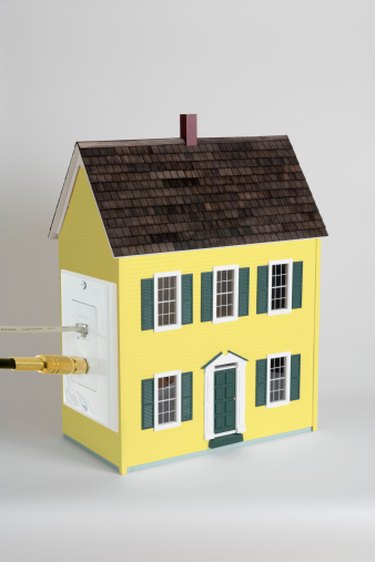
There are several different ways to get Internet service into your home: cable TV, phone company DSL (digital subscriber line) or dial-up, wireless Internet and satellite Internet. No matter how you receive your Internet service, getting cable TV service is an independent issue. Even if you get your Internet service from the local cable TV company, you will not be able to get television programming from that same cable unless you also subscribe to TV service with the cable provider.
Step 1
Evaluate the availability of off-air (roof antenna) television reception before you choose to pay for cable TV. Check with your neighbors who are receiving off-air television and find out how they like it. If someone close by is getting a good off-air signal, chances are you also can get good reception. You can check out the projected reception for your home online at the Antenna Web site.
Video of the Day
Step 2
Use your existing Internet connection to watch current television programming, online, on your PC through one of the streaming TV websites like Hulu. This is not cable TV, but depending upon what you are actually looking for, this may satisfy your needs and avoid additional cable bills.
Step 3
Shop around for cable TV providers in your area. Just because you are getting Internet service from one provider does not mean that you don't have other choices. There may be others available offering better deals. Make sure you know what's out there before you make your decision.
Step 4
Call up the cable TV company that is providing your Internet service and ask about its television service. If you are only interested in basic service, you may be pleasantly surprised to find out that the company's basic TV programming services are already available, as long as you are paying for your Internet connection.
Step 5
Select the best deal, what works for you, and become a subscriber.
Video of the Day